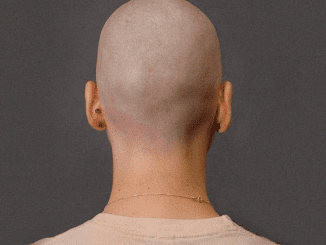Your feet do more than just carry you from place to place; they can also reveal important clues about your overall health. Often overlooked, the condition of your feet can signal potential health issues ranging from circulatory problems to serious neurological disorders. Here are ten ways your feet might be giving you a glimpse into your health status.
1. Cold Feet: A Potential Sign of Circulation Issues

Do your feet often feel cold, even when the rest of your body is warm? This could be a sign of poor blood circulation, which might be related to smoking, high blood pressure, or heart disease. Another possible cause is nerve damage, especially in people with uncontrolled diabetes. If your feet are consistently cold, it’s worth consulting a healthcare professional to rule out any serious conditions.
2. Persistent Foot Pain: Could Be Stress Fractures or Osteoporosis
If you experience ongoing foot pain that isn’t caused by uncomfortable shoes, it might be more than just a minor inconvenience. Persistent pain could indicate stress fractures or weakened bones due to osteoporosis. High-impact activities like running or jumping can lead to small cracks in the bones of your feet, requiring medical attention to prevent further damage.
3. Swollen Feet: A Warning of Underlying Health Issues
While occasional swelling in the feet can result from standing too long or during pregnancy, persistent swelling should not be ignored. It could be a sign of poor circulation, kidney disease, or even an underactive thyroid. If your feet remain swollen, it’s important to seek medical advice to identify and treat the underlying cause.
4. Burning Sensation: A Possible Symptom of Peripheral Neuropathy

A burning sensation in the feet is often associated with diabetic peripheral neuropathy but can also result from other conditions like vitamin B deficiency, chronic kidney disease, or poor circulation. If you experience a burning feeling in your feet, it’s crucial to consult a healthcare provider to determine the cause and find appropriate treatment.
5. Dark Spots on Your Feet: Check for Skin Cancer
We typically associate skin cancer with sun-exposed areas, but melanoma can also develop on the feet, including beneath the nails. If you notice any unusual dark spots or growths on your feet, it’s essential to have them examined by a doctor. Early detection of skin cancer significantly increases the chances of successful treatment.
6. Yellow Toenails: Indicative of Fungal Infections or More Serious Conditions

Thick, yellow toenails are often caused by a fungal infection but can also signal more serious health issues like lymphedema, lung disease, or psoriasis. Keeping an eye on changes in your toenails can help in early detection of these conditions, allowing for timely intervention.
7. Foot Ulcers That Won’t Heal: A Red Flag for Diabetes
Foot ulcers that persist without healing are a common complication of diabetes, due to poor circulation and nerve damage. If you have a sore on your foot that isn’t improving, it’s crucial to seek immediate medical attention to prevent further complications, such as infection or even amputation.
8. The Babinski Sign: A Neurological Alert

The Babinski sign, where the big toe moves upward and the other toes fan out when the sole of the foot is stroked, can indicate serious neurological conditions like stroke or multiple sclerosis. While this reflex is normal in infants, its presence in adults is a cause for concern and should be evaluated by a neurologist.
9. Claw Toes: Linked to Nerve Damage and Neurological Disorders
Claw toes, characterized by an upward bend at the base of the toes and downward bend at the middle joints, often result from nerve damage due to conditions such as diabetes or chronic alcoholism. If left untreated, claw toes can become permanent and may require special footwear or surgical intervention.
10. Red, White, and Blue Toes: Could Be Raynaud’s Disease

Raynaud’s disease causes the toes to change color—from white to blue to red—in response to cold or stress. This condition involves the sudden narrowing of arteries and can be linked to other health issues like rheumatoid arthritis or thyroid disorders. If you notice these color changes, it’s important to discuss them with your doctor.
Conclusion
Your feet can provide valuable insights into your overall health. By paying attention to changes in your feet, such as temperature, color, and sensation, you can catch potential health issues early. Regular self-examinations and prompt consultation with a healthcare professional can help ensure that your feet—and the rest of your body—remain healthy and strong. Don’t ignore what your feet are telling you; they could be giving you the first signs of something more serious.


